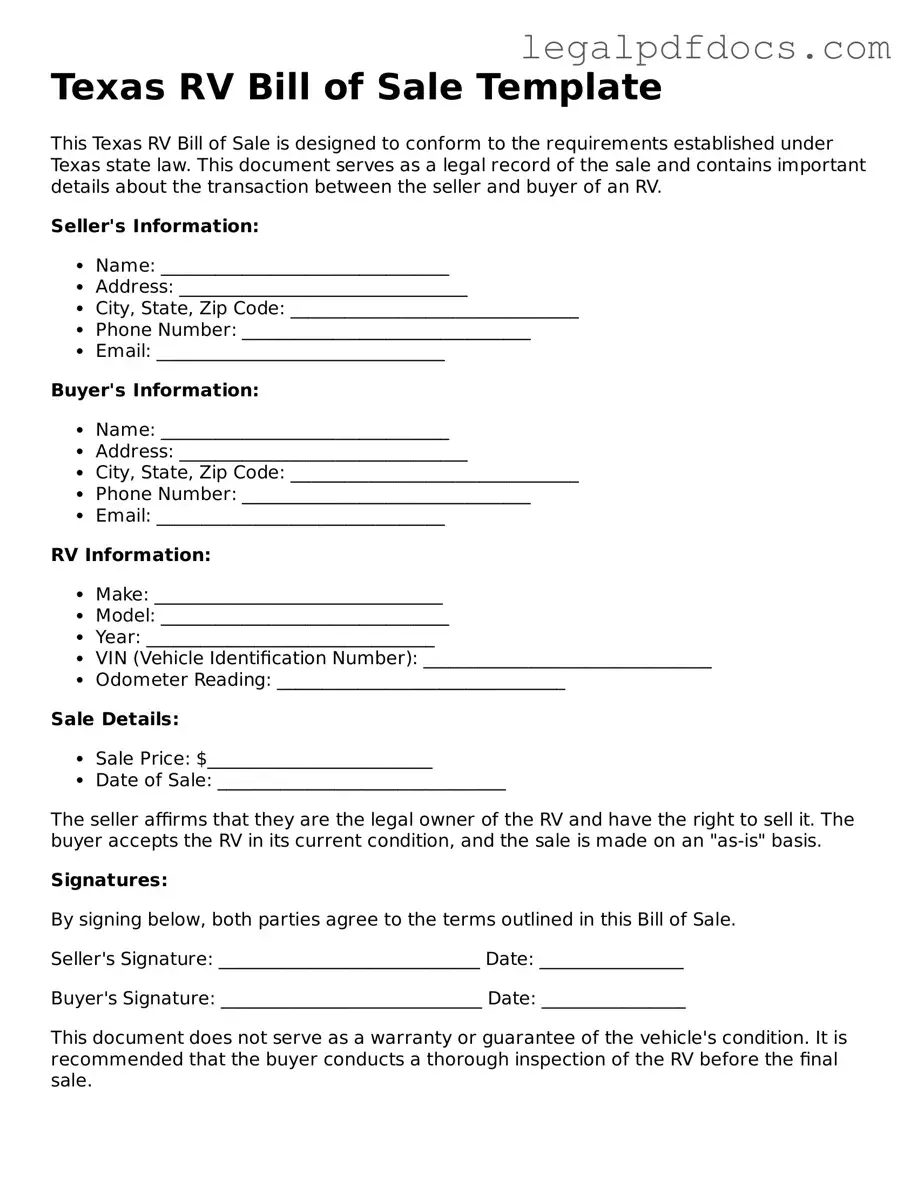Official RV Bill of Sale Form for Texas
The Texas RV Bill of Sale form is a legal document used to record the sale and transfer of ownership of a recreational vehicle in Texas. This form provides essential details about the transaction, including the buyer's and seller's information, vehicle identification, and sale price. Completing this form is a crucial step in ensuring a smooth transfer of ownership and protecting both parties involved.
To fill out the form, please click the button below.
Open RV Bill of Sale Editor Here
